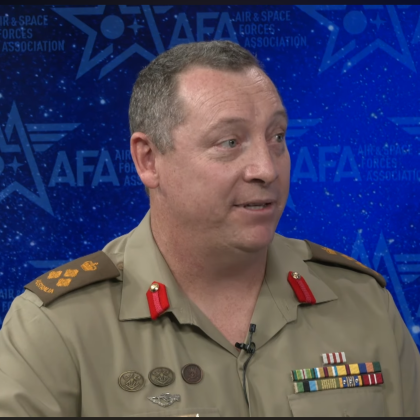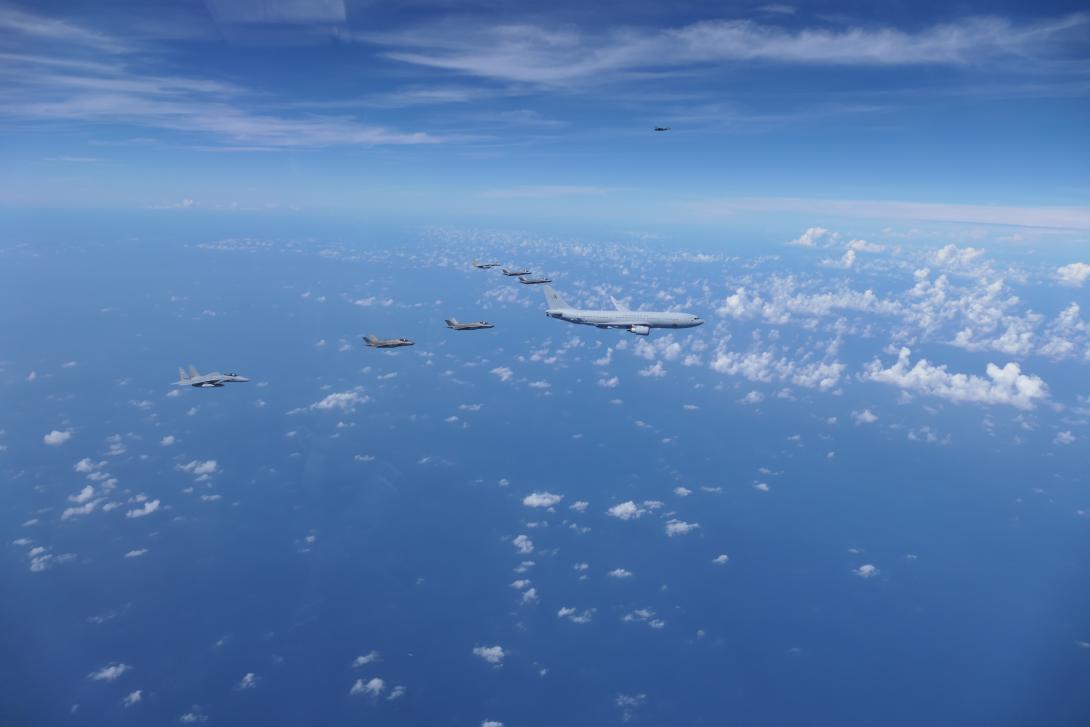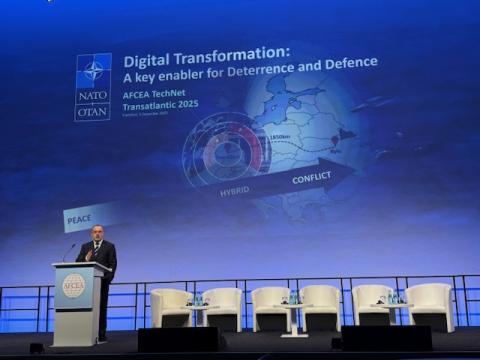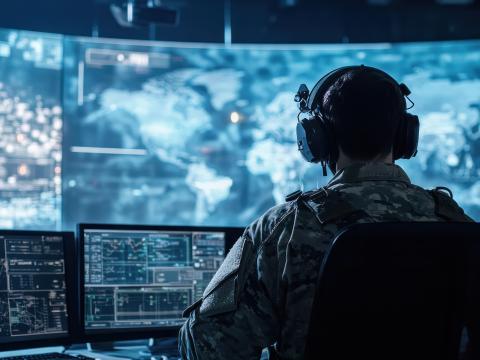Australia Is Improving Allied Space Operations
Since the 2022 stand-up of Australia’s Space Command, Australia’s military has worked to integrate warfighting across all domains—including space. This involves improving the capabilities of its space workforce, reviewing its command and control (C2) structure and evaluating how it presents forces into joint operations across all of its military services, reported Australian Army Brigadier Christopher Gardiner, space and cyber attaché at the Australian Embassy in Washington, D.C.
Gardiner spoke at a digital "Air & Space Warfighters in Action" series on Friday to industry and reporters.
“If we are being told to defend Australia and our immediate region or deter through denial a potential adversary's attempt to project power against Australia through the Northern approaches, space is a critical component to deter and deny those actions,” Gardiner said. “If we want to maintain an operational advantage, we need to maintain our access to space.”
And as part of its national defense approach—which is centered around denying and defending against the People’s Republic of China—the Australian military is continuing to strengthen international partnerships, with an eye toward improved space-related operations. The continued participation in U.S.-led exercises and training events, such as Talisman Saber, is indeed advancing combined space operational capabilities, the attaché noted.
“Absolutely, it is getting better,” Gardiner shared. “I think that the sophistication, in the years that I had seen, and no doubt in the time since I have left, continues on a very positive trajectory. A lot of times in the past, we would meet together and we couldn't actually do stuff together. We could do things side by side, but not in a truly joint, combined manner.”
Naturally, Australia’s partnerships extend across the Indo-Pacific region, with countries like Japan, Korea and the Philippines bringing various capabilities to the table.
“As we start to learn about the partnerships in the region, every country is bringing different capabilities to the forefront, and the more we interact internationally and within the region, the more we appreciate the strength that everyone is bringing, certainly within the space domain, but also collectively across all of the domains,” Gardiner noted.
That calls for improved space-related tactics, techniques and procedures; increased communications, C2 and combined planning.
“[It is about making our] international partnership stronger so that we can test it through exercises and all these other great events, but more so that we know how each other is planning, know how each other will react to certain circumstances, and we can start to produce a better combined force together,” he stated.
Australian military space personnel—including liaisons and officers—are embedded in both the U.S. Space Force and the United States’ space-related combatant command version, the U.S. Space Command, as well as other commands around the U.S. military. U.S. officials are also in Australia.
“Those liaisons and those officers that are embedded into our commands and the ones that we have embedded into yours, up front, they are essential,” Gardiner noted.

Those liaisons and those officers that are embedded into our commands and the ones that we have embedded into yours, up front, they are essential.
He emphasized that having both embedded officers—such as the Australian O-6 officer embedded as the deputy commander of U.S. Space Forces Indo-Pacific—as well as Australian enlisted personnel, say, operating the wideband satellite communications within a U.S Space Force Delta, “all generates and produces capability that is essential.”
And similarly to the United States, Australia is turning to more commercial solutions for space.
Last year, the Australian military introduced the so-called Concept SELENE to get after space domain resiliency. As part of a broader concept framework, the military is advancing concepts in each warfighting domain—such as integrating air and missile defense and targeting. For space, Concept SELENE recognizes that the military does not have enough resources to directly build resilient architecture.
“We need to partner, and we need to cooperate to generate the resiliency effect,” Gardiner noted. “And that is seen predominantly through several tenets, the first being as commercial as possible and as military as required, and then the second being allied by design, and Australia is necessary as needed. Our collaborative work that we're doing with industry, with commercial partners, and yes, with the United States, is based to maintain awareness and everything else, but also pushing forward enabling the design of that resilient future architecture.”
The goal, Gardiner said, is to understand what capabilities are needed where and whether Australia needs to duplicate efforts or discern unique capabilities that it can bring to space.
“We need to contribute with our partners to the collective security of the Indo-Pacific, and we need to contribute with our partners in the maintenance of a rules-based global order,” Gardiner emphasized.





Comments